#Bali Traditions
Explore tagged Tumblr posts
Text
Discover Bali's Traditional Villages: A Journey Through Culture and Heritage

Bali, often referred to as the "Island of the Gods," is renowned for its stunning beaches, lush landscapes, and vibrant nightlife. However, beyond the popular tourist spots lies a world rich in tradition and culture, waiting to be explored. The traditional villages in Bali offer a unique glimpse into the island's authentic way of life, where ancient customs and rituals are still very much alive. In this article, we will take you on a journey through some of the most captivating traditional villages in Bali, highlighting their unique charm and cultural significance. Explore the hidden treasures among the various islands in Bali and immerse yourself in the timeless beauty of its villages.
Penglipuran Village: A Model of Tradition and Cleanliness
Nestled in the highlands of Bangli, Penglipuran Village is famous for its well-preserved culture and immaculate cleanliness. The village has received numerous accolades for being one of the cleanest villages in the world. Walking through Penglipuran, you'll be enchanted by the neatly arranged bamboo houses, traditional gates, and beautifully landscaped gardens. The villagers here take great pride in maintaining their environment and preserving their customs. Penglipuran offers a serene and picturesque setting, providing visitors with a tranquil escape from the hustle and bustle of modern life.

Tenganan Village: The Home of Bali Aga
Tenganan Village is one of the oldest and most traditional villages in Bali, inhabited by the Bali Aga people, the original inhabitants of the island. Located in the Karangasem Regency, Tenganan is known for its unique culture and traditions that have been preserved for centuries. One of the village's most notable practices is the weaving of double ikat fabric, known as Geringsing, which is believed to have magical properties. Visitors can witness the intricate process of creating this fabric and learn about the village's rich history and customs.

Mas Village: The Heart of Woodcarving
For those interested in Balinese art, Mas Village is a must-visit. Located just south of Ubud, Mas is renowned for its masterful woodcarvings. The village is home to numerous galleries and workshops where artisans skillfully transform blocks of wood into stunning sculptures and intricate designs. The art of woodcarving has been passed down through generations in Mas, and visitors can observe the meticulous craftsmanship that goes into each piece. Whether you're looking to purchase a unique souvenir or simply appreciate the artistry, Mas Village offers an enriching cultural experience.
Celuk Village: The Silver and Goldsmiths' Haven
Celuk Village, located in the Gianyar Regency, is the center of gold and silver jewelry making in Bali. The village is lined with workshops and galleries showcasing a wide array of intricate jewelry pieces. Visitors can watch skilled artisans at work, crafting delicate and ornate designs using traditional techniques. Celuk Village offers a unique opportunity to purchase high-quality jewelry directly from the source, making it a perfect destination for those seeking beautiful and authentic Balinese souvenirs.

Ubud's Surrounding Villages: A Cultural Hub
Ubud is often regarded as the cultural heart of Bali, and its surrounding villages are equally rich in tradition and heritage. Villages like Batubulan, famous for its stone carvings, and Batuan, known for its traditional paintings, offer visitors a chance to explore different aspects of Balinese culture. These villages host various cultural performances, including traditional dance and music, providing a deeper understanding of Bali's artistic heritage. The lush landscapes and tranquil atmosphere of Ubud's villages make them ideal for a peaceful retreat and cultural exploration.
Cultural Festivals and Ceremonies
A visit to the traditional villages in Bali is incomplete without experiencing their vibrant festivals and ceremonies. These events are integral to Balinese culture, showcasing traditional dances, music, and rituals that have been practiced for generations. Festivals like Galungan, which celebrates the victory of good over evil, and Nyepi, the day of silence, offer a unique insight into the island's spiritual life. Participating in these festivals provides a deeper connection to the Balinese way of life and a memorable cultural experience.
Conclusion
Exploring the traditional villages in Bali is a journey into the heart of the island's culture and heritage. These villages offer a stark contrast to the bustling tourist areas, providing a serene and enriching experience. Whether you're interested in art, history, or simply seeking a peaceful escape, the traditional villages in Bali have something to offer. By visiting these villages, you not only gain a deeper appreciation for Balinese culture but also contribute to the preservation of their unique traditions. So, venture off the beaten path and uncover the timeless charm of Bali's traditional villages.
0 notes
Note
WOAH can we see the skull if thats ok?? that sounds so cool (also only 20€????)
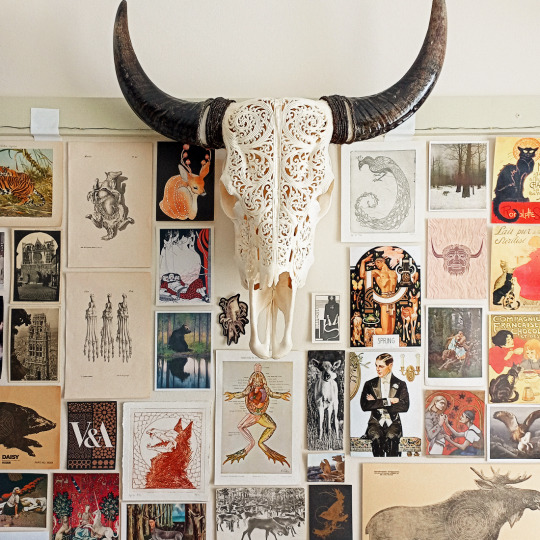

Also since it's hollow you can stick led lights in there for this sort of effect (pardon the mushy quality):
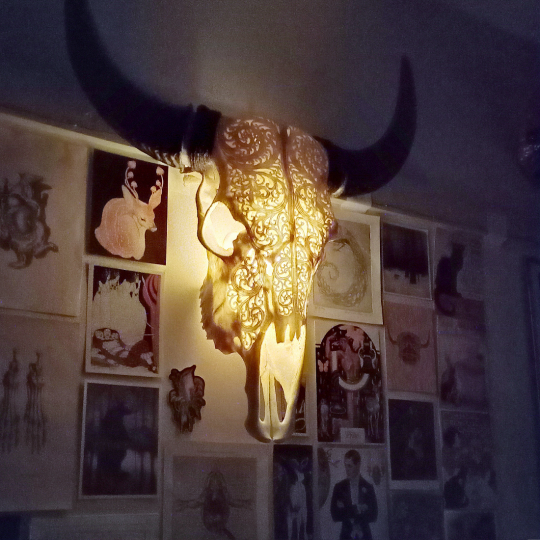
#like I said it's a real Asian water buffalo skull#these are carved by hand in Indonesia mostly in Bali I believe#to my understanding skull carving is a long standing tradition over there but most pieces like this seem to be made for & sold to tourists#I got this one second (third?) hand and I suspect that perhaps the seller didn't know what it was and what they're worth#and yet they graciously agreed to go through the trouble of packaging it carefully and shipping it to the other side of the country#which couldn't have been very easy since it's a big and heavy skull#answered#apricottheapricat#vulture culture#animal death#cw animal death#taxidermy#cw taxidermy
2K notes
·
View notes
Text





[rec. Jacques BRUNET]
"Bali : Musique sacrée"
(LP. CBS. 1972?) [ID]
52 notes
·
View notes
Text
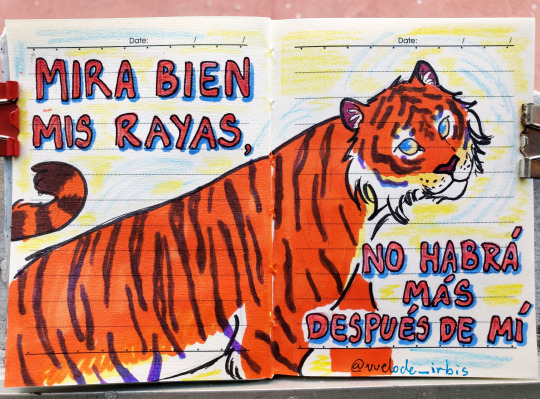
Look hard at my stripes, there'll be no more after me
Day 23 - extinct
[ID: photo of a drawing made in two pages of a small notebook. It features a tiger showing the stripes on their sides, looking back at the viewer. There's text at the top left of the first page and at the bottom right of the second one written in Spanish in all caps. The first page says "Mira bien mis rayas," which translates to "Look hard at my stripes,"; the text on second page says "no habrá más después de mí", which translates to "there'll be no more after me". The drawing was made with felt-tip pens and crayons. End ID]
I still wanna do day 28, but I'm a little busy, so have this one in the meantime. It's dedicated to the Javan, Bali and Caspian tiger subspecies, now extinct due to intense hunting.
Also, this was inspired by the "Extinction" PMV, which lists the many wildlife species that were lost due to human activity and includes the Javan tiger, I highly recommend it!
Prompt list by @mammoth-clangen
#irbis draws#febroary#febroary 2025#felids#felidae#pantherinae#pantherines#tiger#javan tiger#bali tiger#caspian tiger#traditional art#sketchbook#animal art#animal artist#extinct animals#pros of posting on instagram? oh you can add music!#cons? everything else#i was going to translate the text with post-its and i thought it'd look cool but time flew what the hell#i didnt reach good sunlight to take new photos. i literally edited this one yesterday at night so in spanish it is
33 notes
·
View notes
Text




Barong my beloved divine beast.




Rangda is also cool as fuck.
These ancient rivals shall battle forevermore.

#bali#balinese#balinese mythology#baliindonesia#barong#rangda#I admit that elden ring might have helped me get into a lion dance rabbit hole#but the barong dance is a little different as it tells a story#an endless battle between barong (king of good spirits) and rangda (the demon queen)#I have tons of respect for such beautiful cultural traditions#and the masks the costumes. they are just so astonishing#so yeah I just wanted to show these amazing characters and lovingly-crafted costumes to anyone following me ahah#val-post
35 notes
·
View notes
Text
On the eve of March 11, the streets of the traditional village of Mengwi, Bali, flooded with monsters. The giant figures loomed over villagers’ heads, with grotesque smiles, protruding fangs, and extra arms and eyes. They danced in the night, each one brought to life by dozens of locals who moved as one, lifting, spinning, and shaking the monstrous creations.
The spectacle, known as the Ngrupuk parade, is one of several rituals meant to banish evil ahead of Nyepi and the Balinese New Year. While Nyepi is a day of mandatory rest and meditation for Balinese Hindus, the night before is quite the opposite.
The monstrous figures known as ogoh-ogoh—meaning to shake—represent Bhuta-Kala, evil spirits that need banishing, according to Balinese Hindu tradition. The figures, some as tall as a two-story building, are carried boisterously through town on bamboo platforms before their fiery demise.
Ngrupuk is a rather new Nyepi ceremony; ogoh-ogohs first appeared in Bali’s capital city Denpasar in the early 1980s. Since then, the annual parade has spread to surrounding villages. Local youth organizations build and carry the demonic effigies, and most crafters are teenagers and young men. Young children sometimes give creating a monster their best shot, while older master craftsmen are typically responsible for the most ornate ogoh-ogoh.
The monsters are traditionally burned at the end of the ceremony as an act of purification, but local painter and ogoh-ogoh collector I Ketut Nuada adds a few monsters each year to his growing collection-turned-museum.
Nuada once made ogoh-ogoh, but now leaves it to younger crafters and focuses instead on rounding up a few of his favorites after each parade. He collects whatever he can afford from among the effigies that survive a night of violent shaking. Over the last 12 years, Nuada has filled every inch of a warehouse in Mengwi with rescued and retired demons, some 31 in total.
“Every year there are more… and more technology,” says Nuada, speaking through a translator. The figures are traditionally made from paper, bamboo, and found materials, and brought to life through vigorous shaking. But in recent years, crafters have been experimenting with using electronics to light the monsters’ eyes, turn their heads, or raise their wings.
Anywhere from one to 10 people craft a single ogoh-ogoh between January and March. It takes dozens more to bring the demons to life. Before the event, disciples from the village temple will bless the ogoh-ogoh in a ritual where ceremonial offerings, called banten, are also presented.
Then the heavy lifting begins. Each figure is carried—along with lights and generators—by up to 40 locals on a raft-like bamboo platform. Dozens more walk ahead of the ogoh-ogoh carrying torches, or stand on the route performing traditional music. Everyone else gathers to take in the spectacle.
While many ogoh-ogoh will end their night in flames, some are stored away to be refurbished and sold for the following year, or—if they’re lucky—end up in Nuada’s collection. Photographer Matjaž Tančič captured the passionate creators, performers, and collectors who came together for Mengwi’s 2024 Ngrupuk event.
17 notes
·
View notes
Text
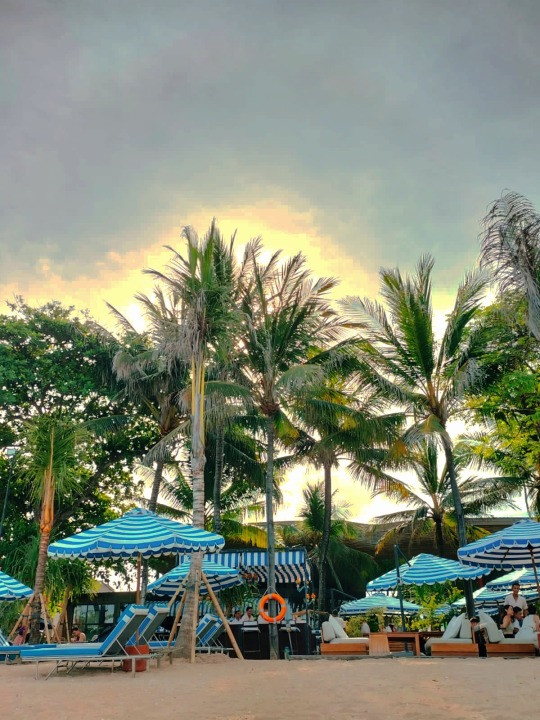
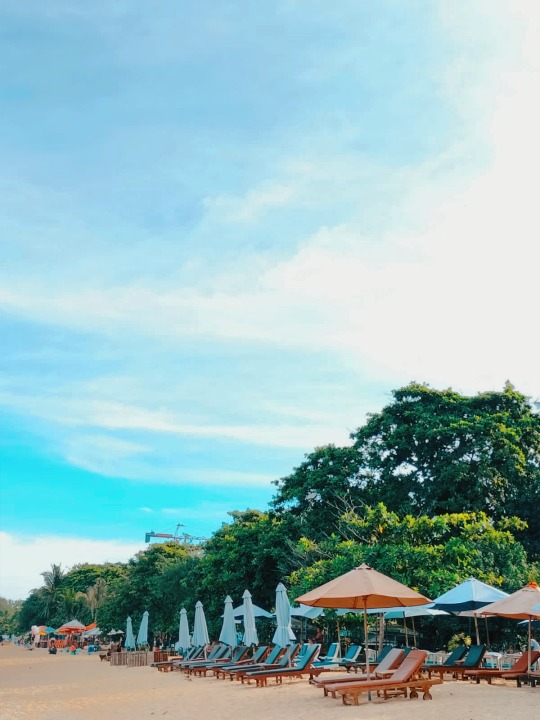

Pantai memang selalu menjadi destinasi yang baik untuk keluarga berlibur menghabiskan waktu bersama
#80s#nature#plants#decor#vintage#art#home#baliindonesia#photography#photoshoot#sanur#pantai#plant photography#my photos#senja#sea#sea art#bali#traditional art#artists on tumblr#estetik
19 notes
·
View notes
Text

🌳🏘️🪴💚
11 notes
·
View notes
Text

Estes façanhudos com dentuças estão por todo o lado.
Aeroporto de Denpasar.
Bali/ Indonesia
foto cjmn
8 notes
·
View notes
Text

Her Blossom Crown 👸🏻🌸
4 notes
·
View notes
Text

Traditional Dances -15
Bali• Indonesia - Barong ᬩᬅᬭᬑᬂ
The Barong is a type of mythical lion
6 notes
·
View notes
Text
Indonesian traditional music instruments kromong from jakarta
Kromong I will make a high quality recording of indonesian music instruments. What Is Kromong? Kromong is part of gambang kromong ensemble, it made of alumunium steel, sounds like a bell. 1 set kromong consist of 2 octave pentatonik scale The Notations are: D4-E4-F#4-A4-B4-D5-E5-F#5-A5-B5 sample: Ondel Ondel, Betawinese traditional song The Gears Logic Pro X DAW Macbook Pro Zoom Audio…

View On WordPress
#Bali#betawi#indonesian#instruments#jakarta#java#Jawa#kalimantan#music#papua#sulawesi#Sumatra#sunda#traditional
3 notes
·
View notes
Text
Discover the Essence of Traditional & Yin Yoga in Bali

Bali is a spiritual haven known for its serene landscapes and deep-rooted yogic traditions. Whether you’re looking to ground yourself with classical practices or restore with gentler movements, the island offers it all. From traditional yoga lineages to Yin Yoga sanctuaries, Bali invites you to step into balance and presence.
Embrace the Roots of Traditional Yoga in Bali
Reconnect with the authentic roots of yoga through traditional yoga in Bali, where sessions focus on mindful breathwork, foundational postures, and yogic philosophy. These practices, often held in ashrams or nature-inspired studios, bring you closer to the discipline’s original intent—union of body, mind, and spirit.
Traditional Practice Meets Coastal Calm in Canggu
In the surf town of Canggu, yogis can experience traditional yoga in Canggu, a blend of structured sequences and meditative awareness. The calm environment makes it an ideal place to deepen your personal practice or begin your journey with a classical approach to yoga.
Soothe Your Body and Mind with Yin Yoga in Bali
For those seeking stillness and introspection, Yin Yoga in Bali offers deep tissue release and nervous system restoration. This practice uses long-held poses to stimulate energy channels while promoting emotional balance, making it a favorite among travelers in search of inner peace.
Explore Gentle Practice with Yin Yoga in Canggu
Yin Yoga in Canggu is where tranquility meets technique. Taught by experienced instructors in cozy, open-air studios, these classes are perfect for unwinding after a long day or balancing more intense Vinyasa sessions.
Final Thoughts
Whether you’re drawn to the discipline of traditional yoga or the calming embrace of Yin, Bali has something for every seeker. The island's studios and teachers carry a commitment to authentic, heart-centered practices that support your personal growth both on and off the mat.
0 notes
Text
Traditional Dance
Honoring Culture Through Movement Celebrate Indonesia’s rich cultural heritage with Forever Dance Crew’s Traditional Dance Show — an elegant and powerful tribute to the beauty, stories, and spirit of our archipelago. We bring the best of Betawi, Bali, Dayak, Javanese, Minang, and Nusantara dances to national and international stages. Perfect for embassy events, state ceremonies, corporate…
#betawi bali dayak dance#betawi dance#budaya indonesia performance#cultural dance indonesia#dance performance Jakarta#forever dance crew#forever dance crew traditional#tari nusantara#traditional dance indonesia#traditional dance show
0 notes
Text

Balinese dance ✨
3 notes
·
View notes
